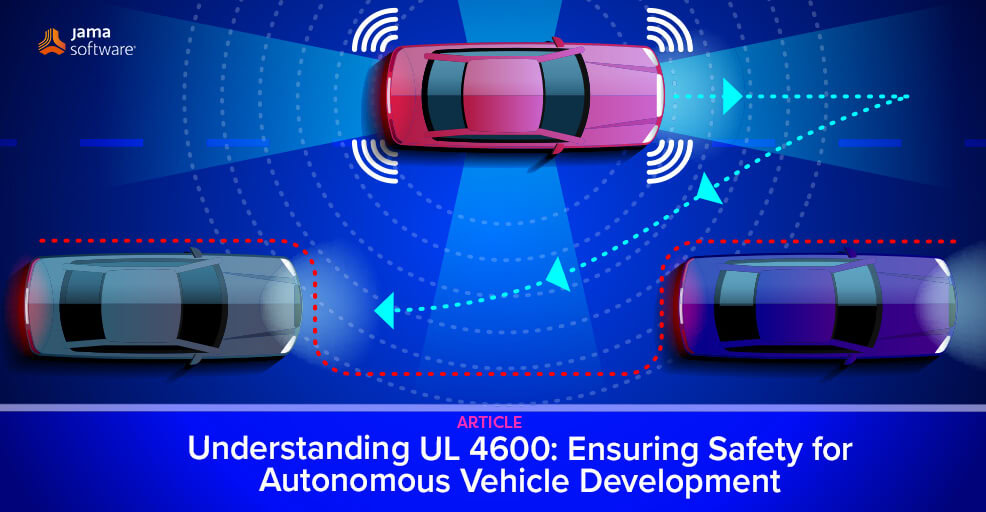
Understanding UL 4600: Ensuring Safety for Autonomous Products
The rapid development of autonomous technology has ushered in a new era of innovation, promising to transform industries ranging from transportation to manufacturing. However, with great innovation comes the paramount responsibility of ensuring the safety and reliability of these autonomous systems. Enter UL 4600, a comprehensive standard dedicated to evaluating the safety of autonomous products. In this blog post, we’ll explore the significance of UL 4600 and how it contributes to the safety and trustworthiness of autonomous technology.
What is UL 4600?
UL 4600, titled “Standard for Safety for the Evaluation of Autonomous Products,” is a set of guidelines and criteria developed by Underwriters Laboratories (UL) to assess the safety of fully autonomous systems. This standard provides a framework for evaluating the safety of autonomous products, including but not limited to self-driving vehicles, industrial robots, and drones. It aims to address the unique challenges posed by the complexity and unpredictability of autonomous technology.
RELATED: Compliance Made Easy with Jama Connect® for Automotive and Semiconductor Development
Key Components
UL 4600 is built upon several critical components designed to ensure the comprehensive evaluation of autonomous products:
- Hazard Analysis and Risk Assessment: UL 4600 requires a thorough analysis of potential hazards associated with the autonomous system. This includes identifying risks, assessing their severity, and implementing mitigation strategies to reduce or eliminate those risks.
- Safety Case Framework: One of the cornerstone elements of UL 4600 is the creation of a safety case. A safety case is a structured argument, supported by evidence, that an autonomous system is safe for its intended use. This involves documenting safety goals, hazard analysis, risk assessments, and validation and verification activities.
- Verification and Validation: UL 4600 emphasizes rigorous verification and validation processes to ensure that the autonomous system performs as intended and meets safety requirements. This includes testing under various scenarios, simulations, and real-world trials.
- Continuous Monitoring and Updates: Autonomous systems operate in dynamic environments. UL 4600 mandates continuous monitoring and updating of the system to address new hazards, software updates, and changes in operating conditions.
- Transparency and Documentation: Transparency is crucial in establishing trust in autonomous systems. UL 4600 requires comprehensive documentation of the design, development, testing, and deployment processes. This documentation serves as evidence of the system’s safety and reliability.
The Importance of UL 4600
The implementation of this standard is vital for several reasons:
- Safety Assurance: Autonomous systems interact with humans and other systems in unpredictable ways. UL 4600 provides a robust framework to ensure that these systems operate safely and mitigate potential risks effectively.
- Trust Building: As autonomous technology becomes more prevalent, public trust is essential for widespread adoption. Compliance with UL 4600 demonstrates a commitment to safety and can help build trust among consumers, regulators, and stakeholders.
- Regulatory Compliance: Many industries are subject to regulatory oversight. UL 4600 helps organizations meet or exceed regulatory requirements, reducing the risk of non-compliance and potential legal consequences.
- Market Advantage: Companies that adhere to UL 4600 standards can differentiate themselves in the market by showcasing their dedication to safety and reliability. This can be a significant competitive advantage in industries where safety is paramount.
Challenges and Future Directions
While UL 4600 provides a comprehensive framework for evaluating the safety of autonomous products, it is not without challenges. The rapid pace of technological advancement means that standards must evolve continually to address new risks and scenarios. Additionally, the complexity of autonomous systems requires ongoing collaboration between industry experts, regulators, and standards organizations.
Looking ahead, the future of UL 4600 lies in its adaptability and integration with other emerging standards and technologies. As artificial intelligence, machine learning, and sensor technologies continue to advance, UL 4600 will play a crucial role in ensuring that autonomous systems remain safe and reliable.
RELATED: Buyer’s Guide: Selecting a Requirements Management and Traceability Solution for Automotive
Conclusion
UL 4600 represents a significant step forward in the journey towards safe and reliable autonomous technology. By providing a structured framework for hazard analysis, risk assessment, verification, validation, and continuous monitoring, UL 4600 helps ensure that autonomous systems can operate safely in complex and dynamic environments. As the autonomous revolution continues, adherence to standards like UL 4600 will be essential in building the trust and confidence needed for widespread adoption and success.
By understanding and implementing the principles of UL 4600, developers, manufacturers, and stakeholders can navigate the challenges of autonomous technology while prioritizing safety and reliability. This commitment to safety will pave the way for a future where autonomous systems enhance our lives while operating with the highest standards of safety and integrity.
Note: This article was drafted with the aid of AI. Additional content, edits for accuracy, and industry expertise by Matt Mickle and Kenzie Jonsson.
- Synopsys Bold Prediction: 50% of New HPC Chip Designs Will Be Multi-Die in 2025 - March 27, 2025
- 9 Strategies To Overcome Challenges In The EU Medical Device Market In 2025 And Beyond - February 6, 2025
- Leveraging Jama Connect® and Jira for Enhanced Requirements - January 30, 2025